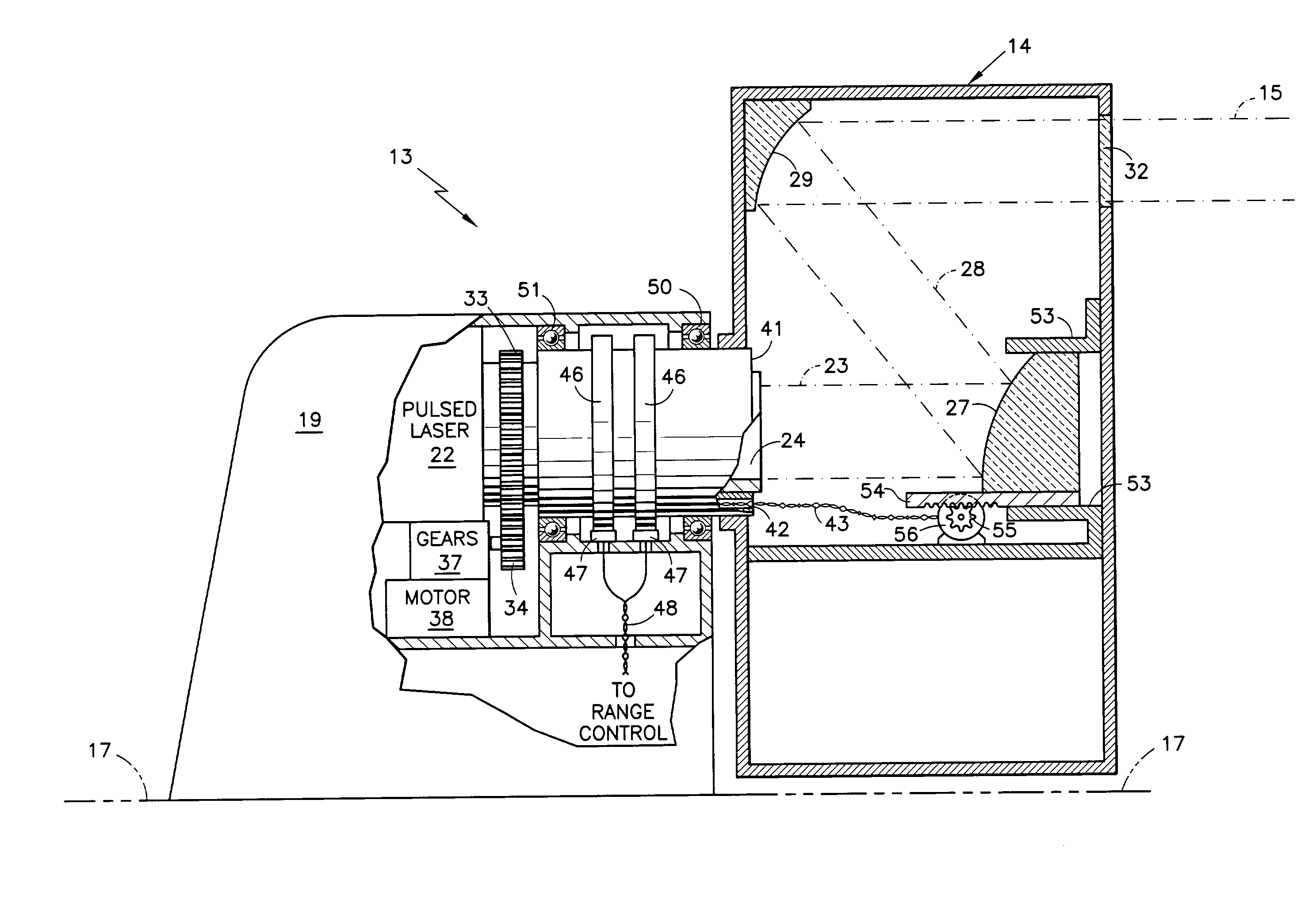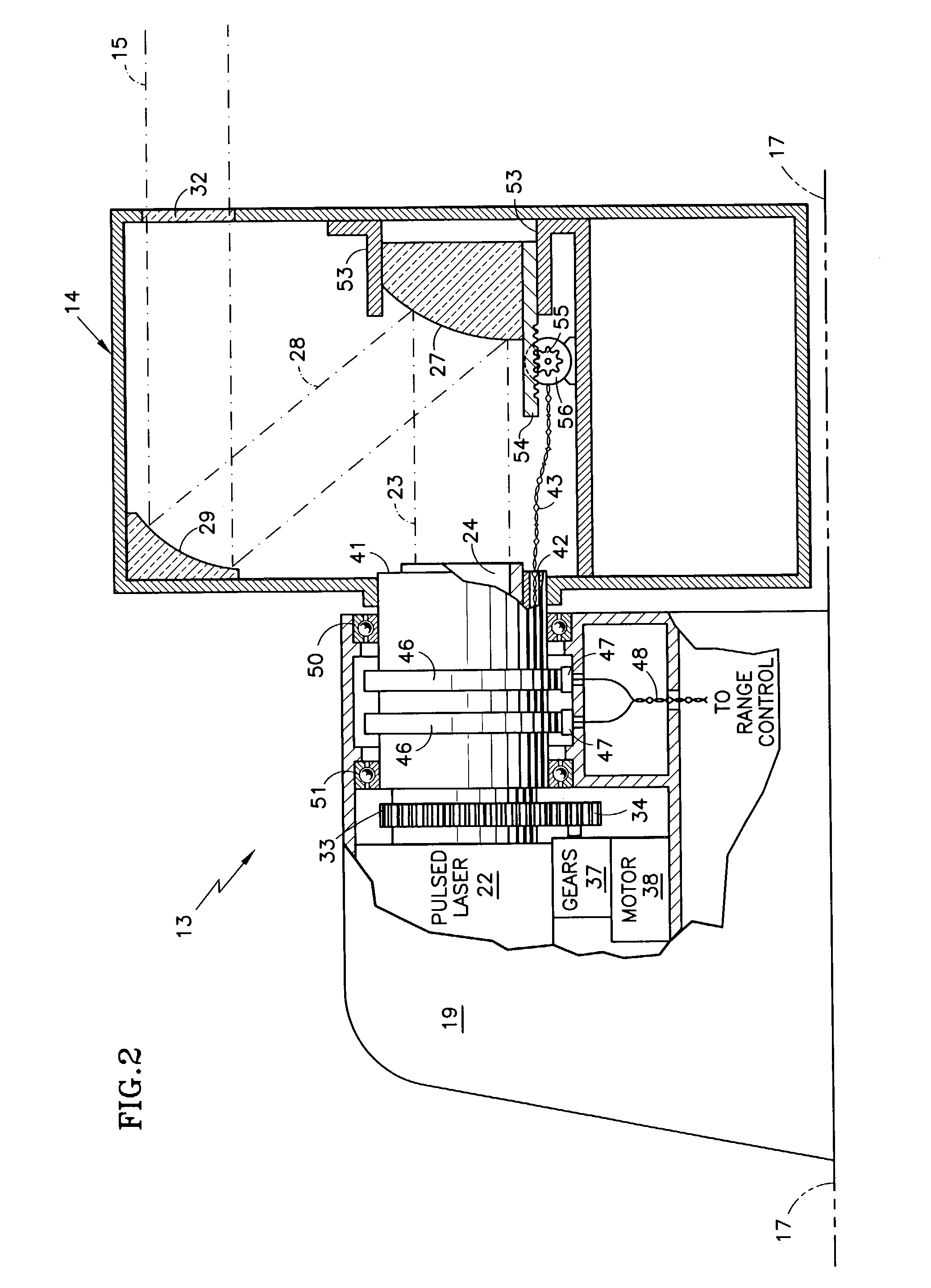Minimizing high power laser thermal blooming in the atmosphere
a high-power laser and atmosphere technology, applied in the direction of laser details, directed energy weapons, electrical equipment, etc., can solve the problems of thermal blooming, single pulse is generally not enough for most missions, and the beam is directly in the path so as to minimize thermal blooming, increase the fluence of the laser beam, and increase the effect of the interaction with the targ
- Summary
- Abstract
- Description
- Claims
- Application Information
AI Technical Summary
Benefits of technology
Problems solved by technology
Method used
Image
Examples
Embodiment Construction
[0015]Referring to FIG. 1, a laser system 13 having a rotary optical antenna 14 that controls spacing of successive radar pulses 15, is disposed on a military vehicle 17. The laser system 13 includes a housing 19 within which the laser, the apparatus for rotating the optical antenna 14, and range control apparatus are all housed.
[0016]In FIG. 2, a pulsed laser 22 provides a laser beam 23 through a circular waveguide 24. The beam impinges on a convex mirror 27 to provide a reflected beam 28 to a concave mirror 29. This in turn provides the output beam 15 through a nearly 100% transmissive window 32. The optical antenna 14 along with the circular waveguide 24 are rotated such as by means of a gear 33 driven by a pinion 34 which in turn is rotated through suitable gear reduction 37 by a motor 38. A cylinder 41, having a bore 42 therein to permit the passage of wires 43, is disposed about the circular waveguide 24. On the cylinder 41 are slip rings 46 which coact with brushes 47 to prov...
PUM
 Login to View More
Login to View More Abstract
Description
Claims
Application Information
 Login to View More
Login to View More - R&D
- Intellectual Property
- Life Sciences
- Materials
- Tech Scout
- Unparalleled Data Quality
- Higher Quality Content
- 60% Fewer Hallucinations
Browse by: Latest US Patents, China's latest patents, Technical Efficacy Thesaurus, Application Domain, Technology Topic, Popular Technical Reports.
© 2025 PatSnap. All rights reserved.Legal|Privacy policy|Modern Slavery Act Transparency Statement|Sitemap|About US| Contact US: help@patsnap.com



